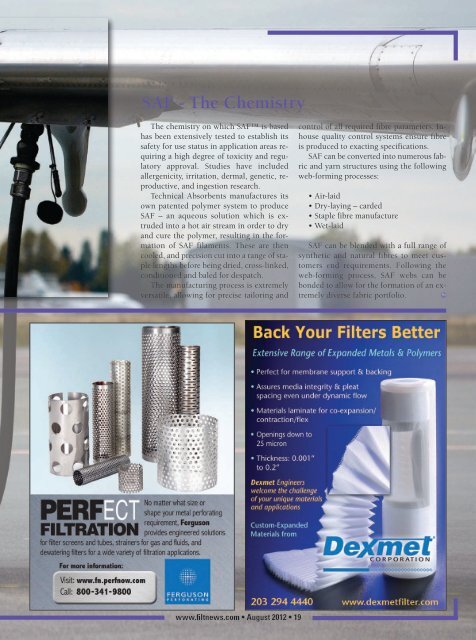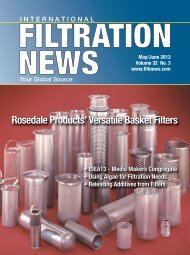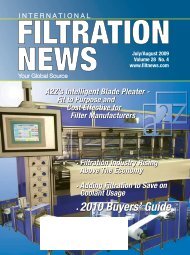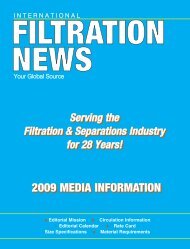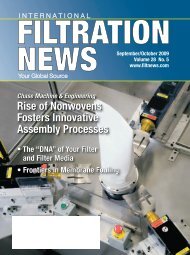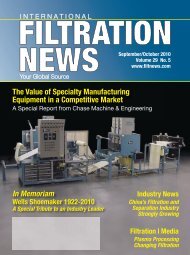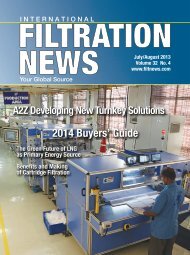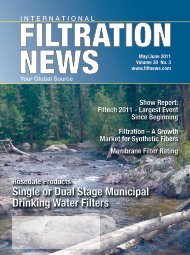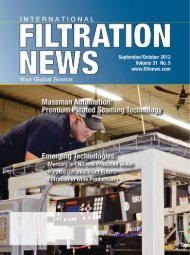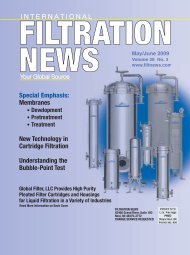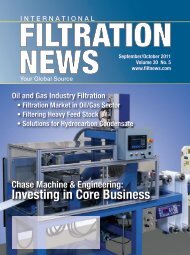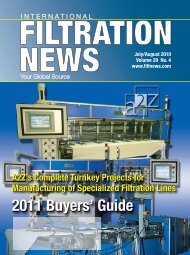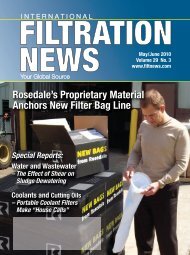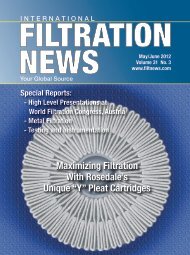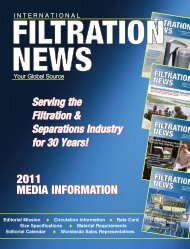2013 Buyers' Guide 2013 Buyers' Guide - Filtration News
2013 Buyers' Guide 2013 Buyers' Guide - Filtration News
2013 Buyers' Guide 2013 Buyers' Guide - Filtration News
Create successful ePaper yourself
Turn your PDF publications into a flip-book with our unique Google optimized e-Paper software.
SAF - The Chemistry<br />
The chemistry on which SAF is based<br />
has been extensively tested to establish its<br />
safety for use status in application areas requiring<br />
a high degree of toxicity and regulatory<br />
approval. Studies have included<br />
allergenicity, irritation, dermal, genetic, reproductive,<br />
and ingestion research.<br />
Technical Absorbents manufactures its<br />
own patented polymer system to produce<br />
SAF – an aqueous solution which is extruded<br />
into a hot air stream in order to dry<br />
and cure the polymer, resulting in the formation<br />
of SAF filaments. These are then<br />
cooled, and precision cut into a range of staple<br />
lengths before being dried, cross-linked,<br />
conditioned and baled for despatch.<br />
The manufacturing process is extremely<br />
versatile, allowing for precise tailoring and<br />
control of all required fibre parameters. Inhouse<br />
quality control systems ensure fibre<br />
is produced to exacting specifications.<br />
SAF can be converted into numerous fabric<br />
and yarn structures using the following<br />
web-forming processes:<br />
• Air-laid<br />
• Dry-laying – carded<br />
• Staple fibre manufacture<br />
• Wet-laid<br />
SAF can be blended with a full range of<br />
synthetic and natural fibres to meet customers<br />
end requirements. Following the<br />
web-forming process, SAF webs can be<br />
bonded to allow for the formation of an extremely<br />
diverse fabric portfolio.<br />
FN<br />
www.filtnews.com • August 2012 • 19


